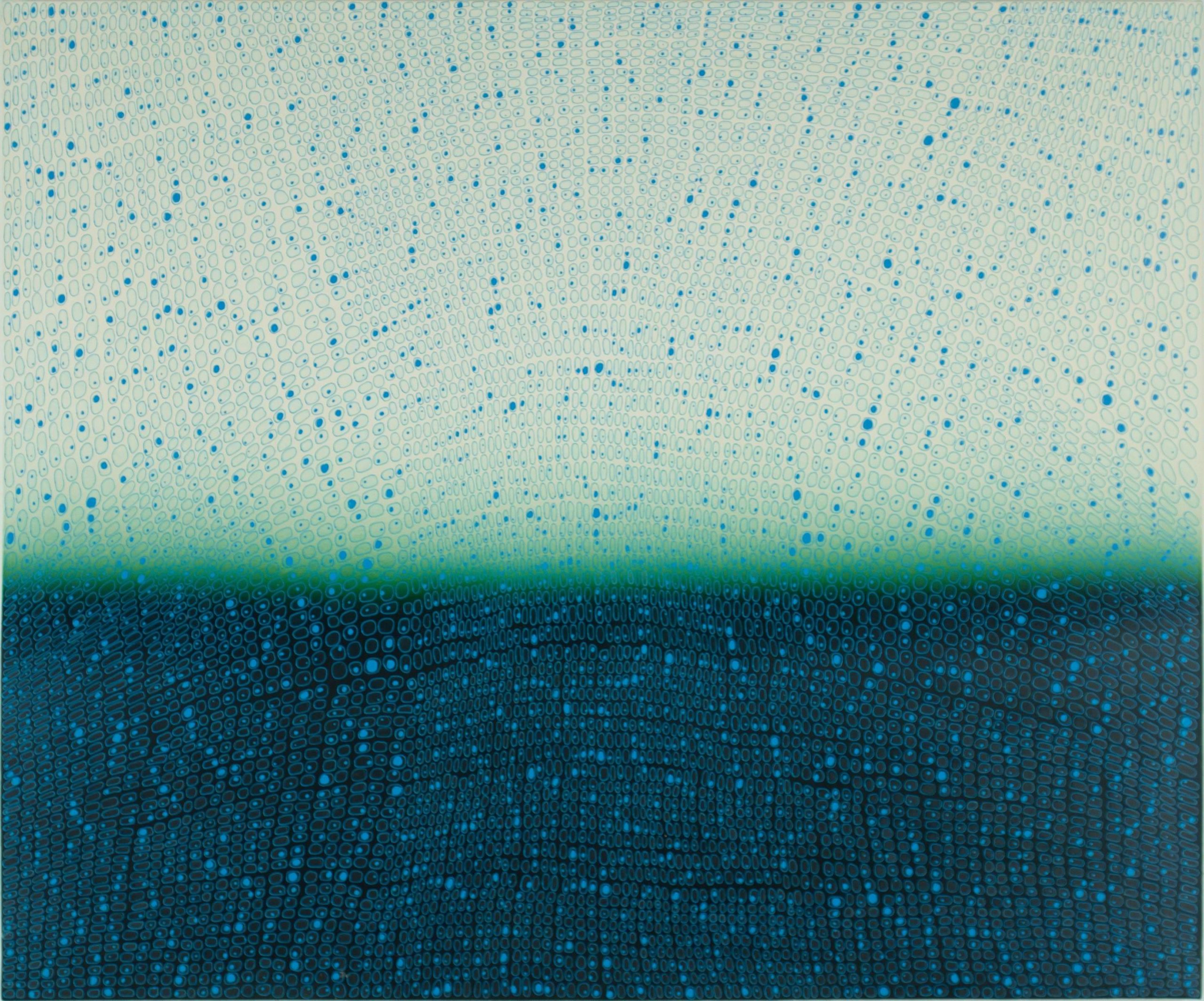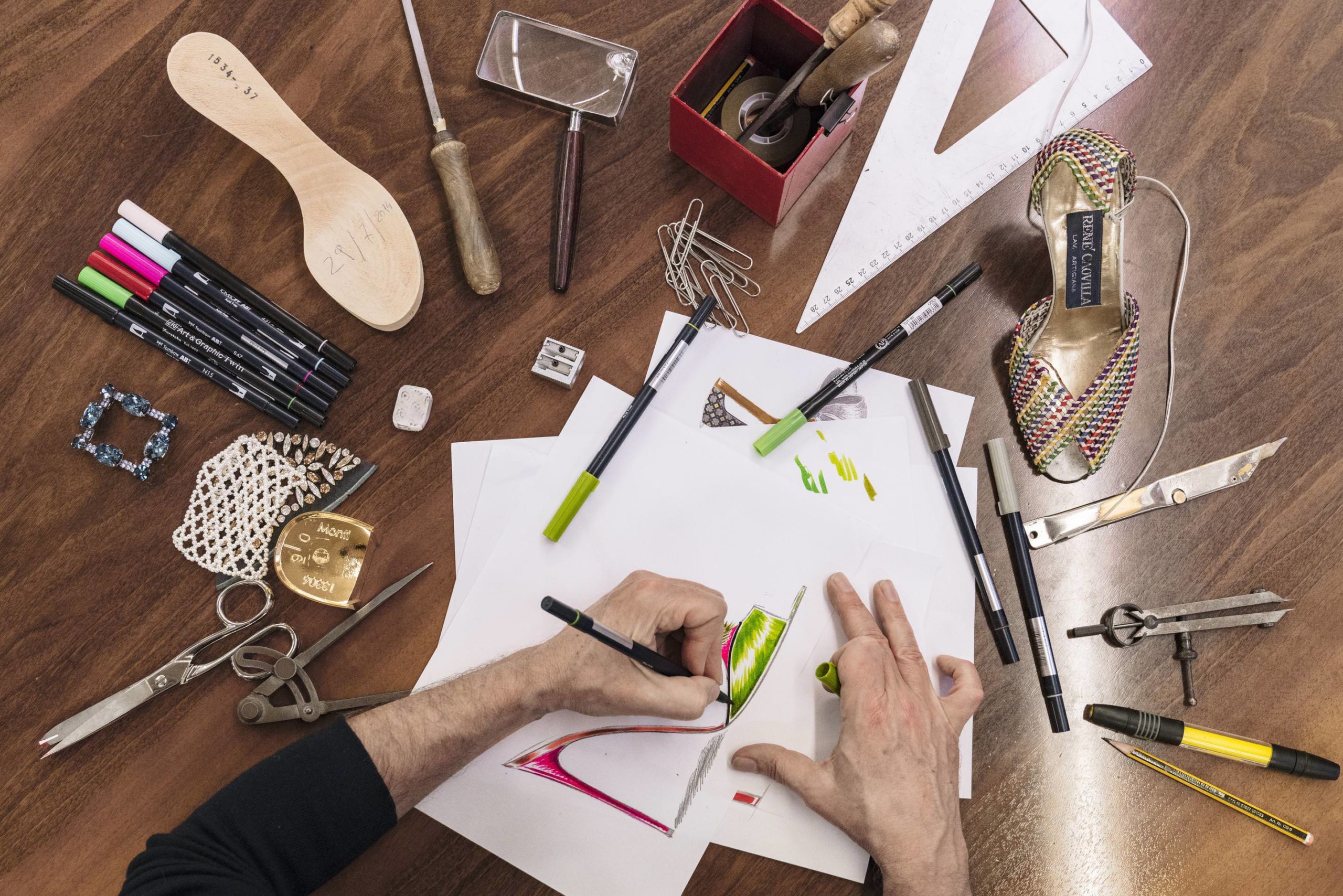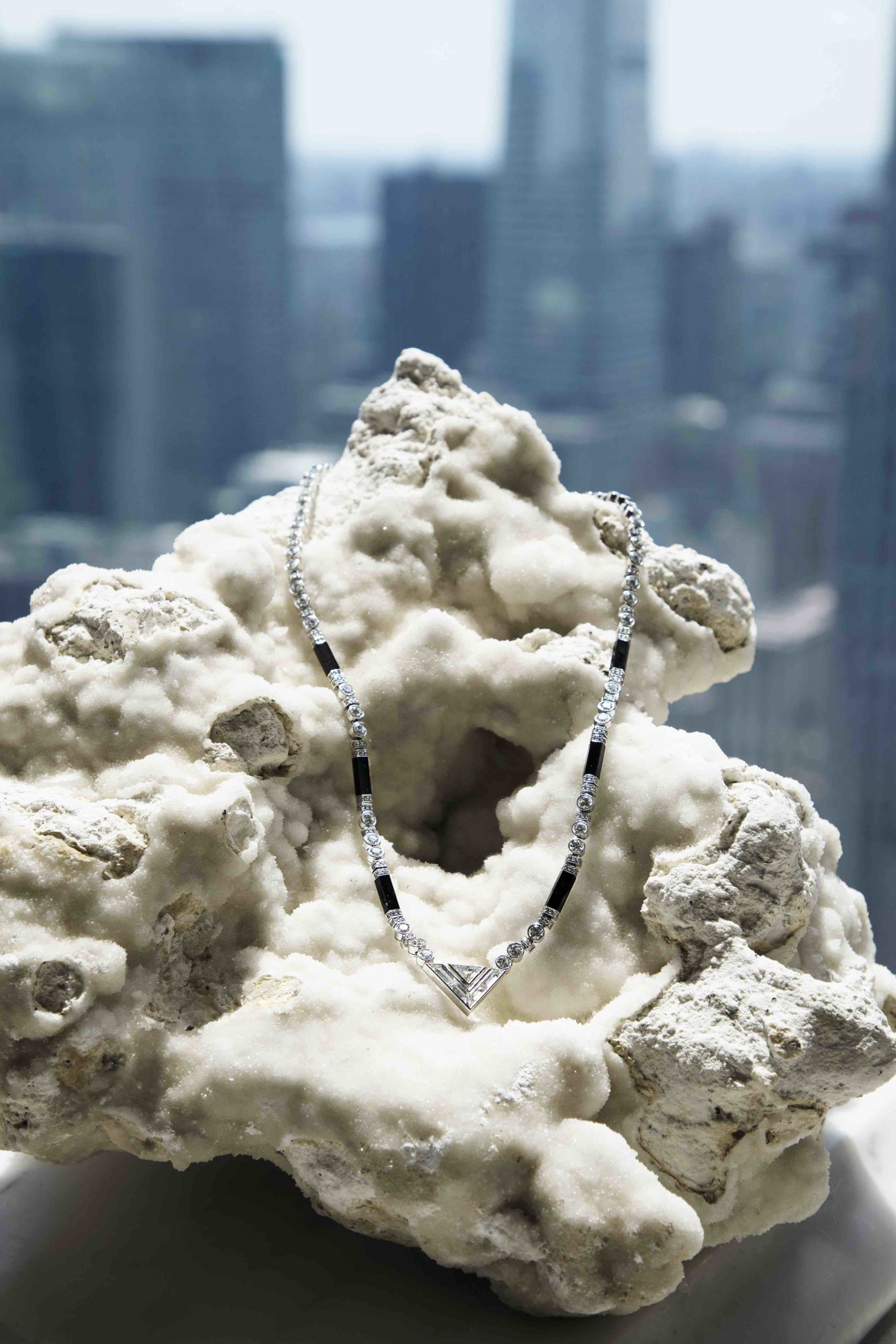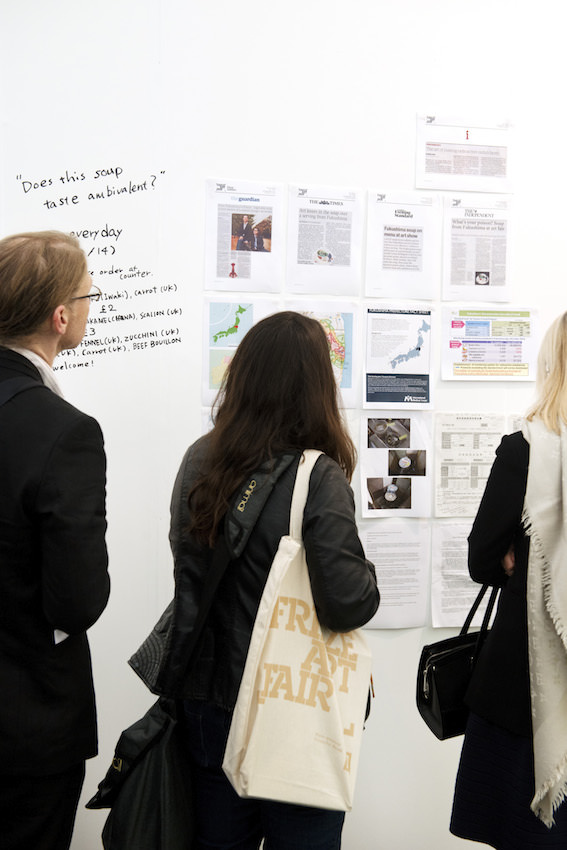Teo González is a Spanish-born artist (1964) who lives and works in Brooklyn. He found and developed his signature style at the end of the ’90s.
His work is bright, colorful, intense, abstract, and precise. In his paintings, one can see a link, a connection to movements such as Op Art, Pointillism, Abstraction among others.
González’s work can be seen at the Brooklyn Museum, at MoMA, at the Los Angeles County Museum of Art, at the National Gallery, and he is represented by Brian Gross Fine Art in San Francisco and by La Casa Amarilla in Zaragoza.
Whitewall spoke with the artist about his practice.
WHITEWALL: Have you always wanted to become an artist or was there a pivotal moment in your life that made you decided to follow that path?
TEO GONZÁLEZ: I always painted and drew, but I never thought of becoming an artist myself. I didn’t know any artists, and my access to the art world was limited to the point that the university in my town didn’t have a fine art department.
In fact, in my late teens my interest laid on designing and building old style photographic cameras. Then, in January 1985, I got an airbrush, and that started a chain reaction that got me to where I’m now. So I’d say it was a pivotal moment, only a few years long.
WW: Where do you get your inspiration from?
TG: Everywhere. I welcome any source of inspiration: Other artists’ works, nature, people’s suggestions, random events of all kinds… But I am also fortunate to have a good filter to translate things into my pictorial language. It is like one of those shape sorting cubes for kids: only one shape fits the hole, no matter how brightly colored it is.
Sometimes I percolate ideas for so long that by the time they make it to the canvas they look nothing like their source. And other times I just look at a freshly finished piece and see something in it clearly inspired by something that attracted me years ago.
WW: How would you describe your art?
TG: My art is Post-Minimal. I got into painting via Abstract Expressionism, but I soon realized that I wasn’t cut for the emotional roller-coaster. I needed to have more distance from the work while being able to paint seven days a week. With Post-minimal, I placed myself in a situation where the work itself took care of many of the decisions that used to derail my creative drive.
Through the years I’ve maintained a push-and-pull relationship with the work: Sometimes the production is more reductive, and others times it’s more half way to something else. When it gets busier, be conceptually or in its execution, I tend to rein it in and get back to its origin. Also, my work is self-referential to a large extent.
A lot of what I do is in response to the work itself or to its process of creation. As a matter of fact, a great source of innovation is the mistakes I do while I paint, often the consequence of a glitch in the auto-pilot mode I get after repeating a similar gesture thousands of times. I guess it could be said that many of my artistic virtues started as artistic sins, which is also an important facet of my work: Its contradictory nature.
I like to challenge perception, visual as well as conceptual, and enjoy the struggle of pairing opposites such as flatness and depth, micro and macro, abstract and figurative, etc.
WW: If you could collaborate with a late artist, who would it be?
TG: I’d like to give a try to a collaboration with Ad Reinhard, but I’m not sure we’d produce anything tangible. He was too passionate about art as to compromise, and I am, too. There would be a lot of talk, for sure. And there would also be a lot of arguing.
WW: Is there any particular contemporary art movement you feel related to?
TG: My work is repetitive in regard to the creative process, structured with respect to composition, and austere in both the palette used and the conceptual content. And I gravitate to works that share one or more of those attributes. The more they share, the more attractive I find them. And the same goes for art movements: So, of course Post-minimal, Minimal, Hard-Edge, de Stijl, Bauhaus, International Style, Op Art, Geometric Abstraction, etc.
WW: Is there any interaction with the digital world or technology in your work?
TG: I’m open to anything that can bring my work a step further, and most of the times I find myself applying paint in unorthodox ways. As for the digital world, I did a few years ago a couple of bodies of work mixing the colors extracted from photographs via computer, but my work is usually low tech.
I like to go through the whole process myself, from going to the lumberyard, buying the wood, building stretchers, preparing canvases, choosing pigments and making my paint, etc. It’s not like it gives me an idea of the painting that will end up being, but it is a way to really get acquainted with the piece.
WW: Does your work have a social or political message?
TG: Throughout the years, I’ve donated artwork to a wide range of social causes; never political. As for using my work to convey a message, my efficiency driven approach to working gets the best of me. I understand art as a language to communicate that which is better expressed visually rather than with words or by any other means. If I wanted to express a message –whether social, political, etc– I’d write it. I wouldn’t paint it.
WW: How do you cultivate a collector base?
TG: Well, I love my collectors. It’s thanks to them that I can keep on painting, which makes me very happy, so I like to make them happy, too. I rarely get to know them on my own.
Typically, they encounter my work through galleries, so when I get to meet them in person it’s because they ask my dealers if they can do a studio visit, or if they are visiting town, or because they want to see a particular piece in person. I’m always glad to meet collectors and I’ve built long-lasting relationships with some.
I wish I could meet more of them! They understand what I’m saying, what my work is about even at the times when I’m not sure of what that is, and they’re just as committed to my work as I am. Their perspective on my art and how it lives within their space is valuable to me. When I’ve got new work to share or good news about a museum acquisition, I reach out and touch base. They as a whole have donated a number of my art works to institutions, which to me is the cherry on top of the cake, so I always make sure to replace their work with another piece I think they’ll love.
WW: What advice would you give to a young aspiring artist?
TG: I’m a hands-on kind of artist, so my advice would be to love the creative process itself as much as the end result. Once you get good at it, any unnecessary corners cut themselves off. Also, get to know your materials well, so you know how they respond to your handling them. And also, edit your work –trashcans are there for a reason.
Conceptually speaking, I’d say embrace influences from everyone but be mindful of what makes it into the finished work; and set your guidelines and stick to them dearly until you don’t. In a nutshell, I’d say know yourself and get to work.
WW: How do you navigate the art world?
TG: I try to be generous. I’ve received a lot of help in the art world, from other artists, teachers, collectors, dealers, curators, art critics, etc. It’s a very humbling experience to have someone coming to you to tell you how much they like what you do. So I try to repay by helping others, and I don’t hesitate referring my peers to galleries, sharing whatever knowledge I have, or even lending a hand for someone else’s projects. It all comes back; it’s up to us to keep it rolling.
WW: Do you have any comments on the current state or evolution of the art market?
TG: The way I see it, the art market is mimicking what’s happening these days in any other market and/or in society in general, which is not a surprise since we are all the same people: the large galleries keep getting larger, the small galleries do whatever they can to survive, and the middle range ones dwindle.
Art fairs don’t help much to alleviate the situation because they compete with foot traffic at galleries, and participation is expensive enough that many galleries can’t swing them. And to top everything off there is the Internet, which helps the notion that seeing the image of an art work on a computer or on a telephone screen is the same as seeing the art work itself. The silver lining is that this all is temporary. Time changes everything, and that includes the art market and the way we interact in it.
What is important is that we keep on creating art as we’ve done it through the ups and downs of last 40,000 years. A friend of mine used to say “good art doesn’t come from comfort”. So, all in all, I’d say this is as good of a time as it’s always been.










